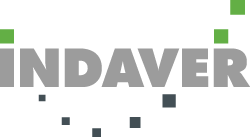Sustainability Report: Indaver's contribution to our planet
Enabler and Gatekeeper
In the circular economy, materials are constantly re-used in a closed, safe loop. Waste is a valuable raw material. We know that it can replace the primary raw materials if it is dealt with intelligently. That is why, in a sustainable circular economy, quality is just as important as quantity. The quality and the safety of products must not be jeopardised. The current mechanical recycling methods must be supplemented with new techniques for chemical and thermal recycling that can break these materials down to their basic building blocks. New high-quality products can then be made from these building blocks. Hazardous materials that can't be recycled are destroyed in our high-tech facilities. That is the role Indaver sees for itself in the circular economy: creating value from waste by recovering valuable materials and energy from it. In that sense we are the enabler (facilitator) of the circular economy. But we are also the gatekeeper: we prevent hazardous substances from getting into the materials and food chain.
Collaboration and New Technologies
The circular economy can only continue to take shape through collaboration and new technologies. That is why we invest in both of these things continually. We promote industrial symbiosis, in which raw materials are recovered from one company's waste for use in another company's production processes. We invest in the technological innovation required to close loops.
A Clear Picture
In our annual Sustainability Report, we report on the way in which Indaver has fulfilled its role in the circular economy over the previous year. Sustainability is embedded in our company, not just in our activities, but also in our techniques and processes. We use great case studies, figures and info graphics to tell the story of our efforts to reduce our impact on people and the environment, thus illustrating how we are contributing to a safer and cleaner world.
Pillars of Sustainability
The Sustainability Report has been compiled logically based on the five 'P's: Policy, People, Planet, Prosperity and Partnerships. In Policy, we explain how we have integrated our role in the circular economy into our corporate vision and business processes. In People, we demonstrate how we are able to deliver the right solutions because we invest in our staff's safety and expertise. We want to attract and develop talent and support our staff so that they remain motivated and engaged. The Planet chapter gives you a close-up look at how we carry out our role in the circular economy, using texts and figures and based on real projects and facilities. In Prosperity, we explain our model for creating value and sustainable growth. That model is based on more efficient processes, organic growth and ground-breaking innovations. The circular economy is reliant on collaboration. In Partnerships, we reflect on the partnerships that we have formed for that purpose.
Sustainability Goals
Everyone wants to live in a safe and clean world. There is a global partnership to make the world habitable and keep it that way for everyone: the United Nations' Sustainable Development Goals (SDGs). Companies such as Indaver make a significant contribution to achieving these sustainability goals. Out of the 17 goals, we chose 8 in which we think Indaver can play an important role. Throughout the report, we use icons to indicate how Indaver's initiatives and activities are in line with these SDGs.
Website
You can view our sustainability report through the website or download it in PDF format. We have also compiled the most remarkable facts and figures about Indaver in 2016, in a handy flyer. This is also available to download from the website.
Share this page






